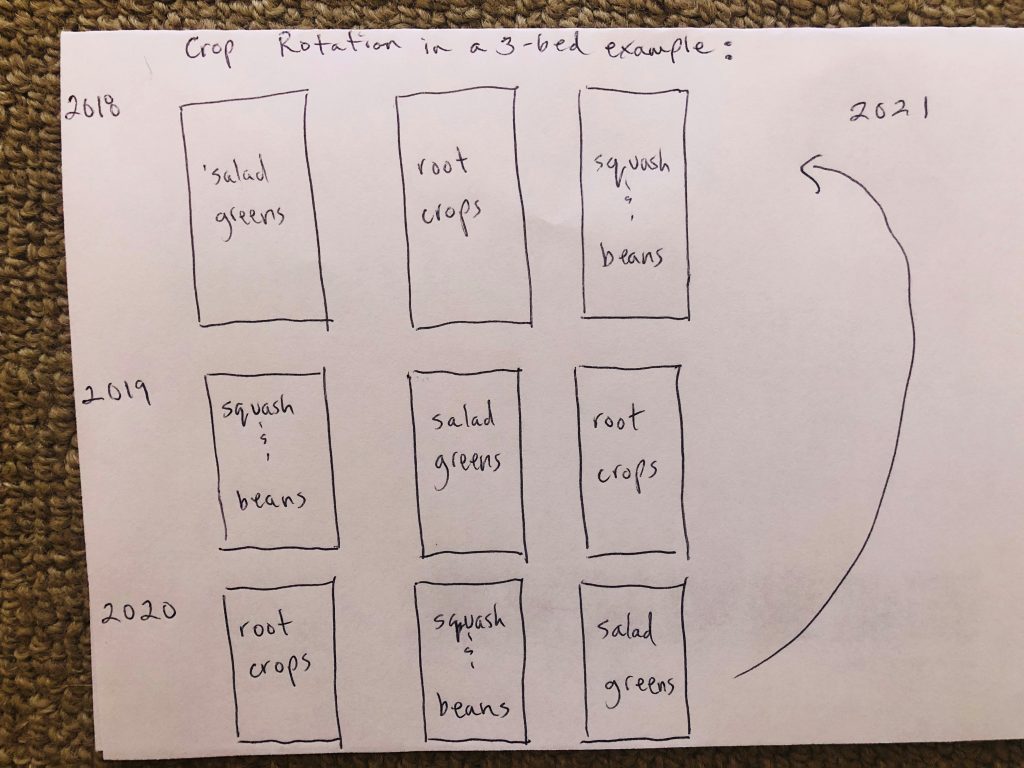Veggie gardening is a growing trend for so many reasons: sustainability, stress reduction, wellness, economy, variety, and taste are just some of the benefits of growing vegetables at home. Doing your homework and preparing a plan before you start really pays off in the productivity of your garden. Here is part one of a two-part series intended to guide rookie gardeners and serve as a resource for the seasoned gardeners. Entire books are written about vegetable gardening and this information is only meant to be a starting point and a general guideline.
Site Selection:
A good site is probably the best thing you can do to ensure veggie gardening success. Choose a site with at least 6 hours of direct sunlight and good drainage with no low, wet areas. If possible, choose a site sheltered from the wind. Try to stay away from trees and shrubs that send up shoots such as aspens, cottonwoods or chokecherries. Be sure there is convenient access to water. One of the biggest rookie mistakes is to start too big. Keep your garden small at first and expand as you learn what works for you.
Pro Tip: Position a garden near a south-facing wall or fence for additional radiant heat.
Soil Prep:
Next to site selection, soil quality will determine the productivity of your garden. Loose, well-draining soil rich in organic matter is key. If you are digging up a new site, add lots of organic material (compost, well-aged manure, soil conditioner) to improve soil condition, fertility, drainage, nutrient and water holding ability. If you are filling raised beds, aim for about a fifty-fifty mix of topsoil and organic material (compost, well-aged manure, soil conditioner). Plan to amend the soil in your veggie garden yearly (either in spring or fall) with more organic matter to replenish nutrients lost by cultivation.
If you are planting any heavy feeders such as squash, cucumbers or melons, add a granular fertilizer made for veggies (lots of fertilizer options for organic or conventional gardens, stop in the greenhouse and we can point you in the right direction).
Pro Tip: Soil can be warmed up faster in springtime by placing a layer of clear plastic over top for a few days before planting.
Garden Layout:
If possible, consider building raised beds for gardening. Raised beds offer better drainage, warm up earlier and require is less bending and kneeling. Lining Raised beds with hardware cloth will help keep pesky critters from coming into your garden beds. Keep any paths or walkways between raised beds wide enough to walk through with a wheelbarrow. Don’t plant tall plants or build trellises where they will shade other plants.
Pro Tip: Plant crops in a different spot in the garden each year. Rotating crops like this helps reduce pests and diseases that may linger in the soil.
See example below:

Planting Seeds:
Seeds are amazing wonders of Nature. To germinate and grow, they need soil, water, and light. Certain seeds (such as beans and squash) will only germinate when the soil temperature is warmer, others (peas, carrots) don’t mind getting started in cool soil. Get in the habit of reading the seed packet. The packet will include important information such as when to plant, seed spacing and ‘days to harvest’. It’s best to choose shorter ‘days to harvest’ varieties. Long season crops such as broccoli, cabbage, tomatoes, and peppers can either be started indoors or purchased as seedlings from the garden center.
There are countless varieties of seed to choose from, and it’s easy to get overwhelmed and try to grow too many things. For beginners, start off small and grow something easy (lettuce, radishes, salad greens), grow something you like to eat, and grow something simple (kale, Swiss chard).
Pro tip: Don’t worry if you get started later in the season. As soil temperatures warm up, seeds planted later will often catch up to those planted early because they germinate and grow faster in warmer soil.
Planting Guideline: Here’s a general guideline for the planting of common veggies in the Tetons. Refer to the information provided on the seed package for specific instructions.
Cool Weather Crops (Mid-April & May Planting):
- Spinach
- Peas
- Carrots
- Most lettuces and salad greens
- Radish
- Kale
- Carrots
- Broccoli, cabbage, Brussels sprouts, cauliflower
- Potatoes
- Beets
Warm Weather Crops (first or second week of June):
- Tomatoes
- Beans
- Squash (zucchini, yellow squash, winter squash)
- Cucumbers
Pro tip: In Teton Valley, old-timers wait until the aspens have leafed out halfway up the mountainsides out before planting their first crops.
Bonus Pro Tip: Cheat the season and try planting your warm-weather crops a week early. Sometimes you can get away with it!

